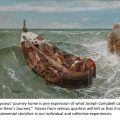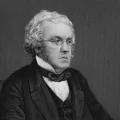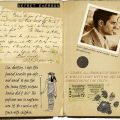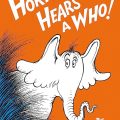Henry Wadsworth Longfellow was one of the most influential and beloved American poets of the 19th century, whose works remain widely read to this day. Born in Portland, Maine in 1807, Longfellow is best known for his epic poem The Song of Hiawatha and his stirring poem “Paul Revere’s Ride”. He was also one of the first American authors to make a living solely from writing, inspiring generations of aspiring writers.
Longfellow’s poetry was renowned for its easy rhyme and meter. His works often dealt with themes of nature, home, love and death and were deeply rooted in European cultures beyond England. He drew on Norse myths in The Song of Hiawatha as well as Greek mythology in Evangeline: A Tale of Acadie (1847). He also wrote about history and politics – “The Arsenal at Springfield” dealt with the US Civil War – as well as contemporary life in his poem “The Village Blacksmith”.
Longfellow’s personal life was marked by tragedy; his wife Frances Appleton died after suffering burns from her dress catching fire. In mourning he grew a long beard which eventually became iconic of Longfellow himself. Despite this tragedy, he wrote some of his most famous works including “The Psalm of Life” (1838) during this period.
Longfellow’s influence spread far beyond literature; he was an important figure in encouraging Americans to look towards Europe for art and culture, which had been largely ignored before then. His use of language to capture emotion also set him apart from oher writers at the time which helped him become one of America’s most popular poets until today.
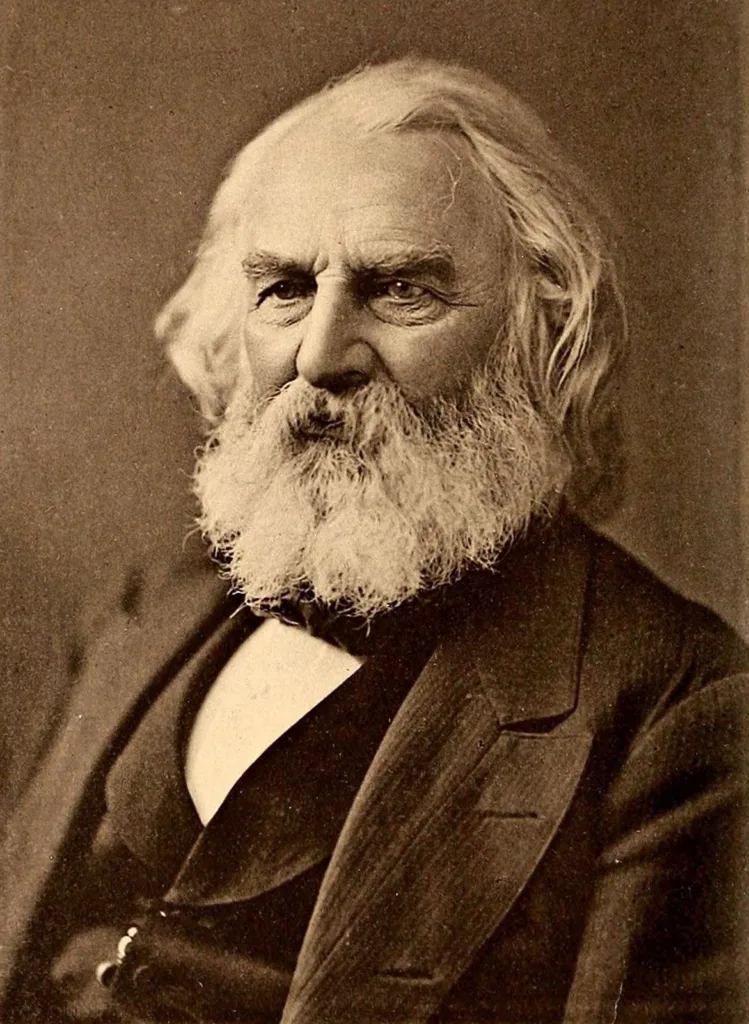
The Most Famous Poem of Henry Wadsworth Longfellow
Henry Wadsworth Longfellow is most famous for his epic poem The Song of Hiawatha, which was published in 1855. The poem follows the adventures of a Native American hero, Hiawatha, and his love interest, Minnehaha. It is written in anapestic tetrameter and consists of 8,000 lines divided into fourteen books. The poem was immensely popular upon its release and was widely praised for its vivid imagery as well as its narrative structure. It has since become one of the most iconic pieces of literature in American history and remains a beloved classic to this day.
The Importance of Longfellow’s Poetry
Longfellow’s poetry is important for its pioneering contributions to American literary life. He was one of the first American authors to successfully forge a career as an author, paving the way for othr writers to do the same. His work also helped connect American poetry to European traditions beyond England, which had a major influence on his style and subject matter. His works were often characterized by a thoughtful, reflective tone that allowed readers to connect with the deeper meanings of nature and everyday life. He also wrote about historical figures and events in an accessible way that made them more accessible for general readership. Finally, Longfellow was an innovator in terms of form and technique; he was one of the first poets to employ enjambment, internal rhyme, and other devices that are now common in modern poetry.
Henry Wadsworth Longfellow’s Writing
Henry Wadsworth Longfellow was best knon for writing a variety of poetic works, including narrative poems, lyric poems, and occasional poems. He was a master of many poetic forms and his works often depicted themes of nature, love, and history. His most famous works include the epic poem The Song of Hiawatha (1855) and the stirring “Paul Revere’s Ride” (1863). Other popular works by Longfellow include “The Wreck of the Hesperus” (1839), “Evangeline: A Tale of Acadie” (1847), “The Courtship of Miles Standish” (1858), and his translation of Dante Alighieri’s Divine Comedy entitled La Divina Commedia di Dante Allighieri (1867-1870). He also wrote numerous shorter pieces such as “The Village Blacksmith” (1839) and “The Arrow and the Song” (1845). His work had a profound influence on American literature for generations to come.
The Popularity of Longfellow
Longfellow’s popularity can be attributed to several factors. He was a master of easy rhyme and his poetry had a natural grace and melody that appealed to readers, allowing his words to linger in the mind long after they were read or heard. His works often drew upon classical mythology, folklore, and religious themes, in addition to exploring themes of love, death, and patriotism. His works also featured vivid descriptions of nature as well as stories that celebrated American history and progress. Longfellow’s style was direct yet lyrical which made it accessible to a wide range of readers while stil being intellectually stimulating. He wrote in both English and German, meaning he could reach an even larger audience. Finally, Longfellow was one of the first authors to write about multi-cultural characters which made him a pioneer for diversity in literature.
The Romantic Poetry of Longfellow
Yes, Henry Wadsworth Longfellow is considered a Romantic poet. His work is characterized by an emphasis on emotion and an idealized vision of the world. He often wrote about nature and its beauty, as well as personal emotion and experience. Longfellow was also influenced by European culture and literature, which he experienced duing his extensive travels in Europe. His poetry is often marked by its use of imagery, symbolism, and allusions to classical mythology. Longfellow’s work has been praised for its lyricism and its ability to captivate readers with vivid descriptions of romantic scenes. Thus, it is clear that Longfellow’s work fits well within the Romantic literary tradition.

Source: wist.info
Henry Longfellow’s Poetry Genre
Henry Longfellow was a renowned American poet, best known for his lyric poems. His lyrical works often told stories of mythology and legend, and were characterized by their melodious quality. He was particularly successful in Europe, and is remembered for his ability to imitate European styles in his poetry. Despite this, he has been accused of writing overly sentimental works.
Exploring Longfellow’s View on the Absence of Yawning Gaps
According to Longfellow, there are no yawning gaps in history because of the many different contributors working together to build up Time and craft the future. The process is not a stagnant one, but rather an ever-evolving one that relies on the collective efforts of many people. By working together, these individuals are able to fill any potential gaps in history with a continuous stream of new information and experiences. As a result, there is an ongoing chain of knowledge and progress that connects each generation, ensuring that no yawning gaps exist.
The Poetry of Henry Wadsworth Longfellow
Yes, Henry Wadsworth Longfellow (1807-1882) was a very good poet. He was one of the most celebrated poets of his day and is remembered today as a major figure in American literature. He wrote some of the best-known poems in the English language, including “The Song of Hiawatha”, “Evangeline”, and “The Wreck of the Hesperus”. His works were widely read during his lifetime and have been translated into more than 50 languages. He also had a great influence on other authors and poets, such as Walt Whitman and Emily Dickinson.
Longfellow’s poetry is known for its vivid imagery, depth of emotion, and musicality. He was also a master of metrical form; his use of traditional rhyme schemes combined with an accessible style made him popular with readers from all backgrounds. His work often deals with themes of nature, love, loss, and patriotism—all elements that resonated with both 19th-century audiences and modern readers alike.
Moreover, Longfellow’s success as a poet was rewarded financially: he was amog the best paid poets of his day; in 1874 he received four thousand dollars for just one poem—the equivalent today to over eighty thousand dollars—an impressive sum for any writer at that time!
In short, Longfellow stands out as an accomplished poet who wrote some of the most beloved works in English literature.
Longfellow’s Famous Poem Written in 1860
The famous poem written by Henry Wadsworth Longfellow in 1860 is titled “Paul Revere’s Ride”. It tells the story of Paul Revere’s historic midnight ride to Lexington, Massachusetts to warn the patriots of a British troop mobilization. The poem is written in an iambic tetrameter and consists of 8 stanzas. The poem begins with the line “Listen, my children, and you shall hear/ Of the midnight ride of Paul Revere” and ends with “So through the night rode Paul Revere;/ And so through the night went his cry of alarm/ To evey Middlesex village and farm”. This famous poem has become an iconic part of American history and culture, inspiring generations of citizens to stand up for freedom and justice.
The Significance of Longfellow’s Thick Beard
Longfellow grew a thick beard in order to cover the scars he received while trying to help douse the flames during his wife’s funeral pyre. He was severely affected by her death, and this physical reminder of the tragedy made him even more emotional. Growing a beard allowed him to hide the reminders of the event, while still being able to express his grief through poetry.
The Fireside Poets: Who Are They?
The Fireside Poets, also known as the Schoolroom Poets, were a group of five American poets who rose to prominence in the latter half of the 19th century. They are William Cullen Bryant, Henry Wadsworth Longfellow, John Greenleaf Whittier, Oliver Wendell Holmes, and James Russell Lowell. These poets were known for writing sentimental and accessible poems that often touched on themes of patriotism and nostalgia. Their works were largely considered to be family-friendly and suitable for children to read. As such, ther poems were often memorized in classrooms across America. Bryant was best known for his poem “Thanatopsis” while Longfellow was renowned for “Paul Revere’s Ride” and Whittier for “Snow-Bound”. Holmes was celebrated for his work “Old Ironsides” while Lowell wrote “The Vision of Sir Launfal”. The Fireside Poets are credited with helping to popularize American poetry and introducing American culture into the literary canon.
Longfellow’s Teaching at Harvard
At Harvard, Longfellow taught Modern Languages in the Smith Professorship. He was well-liked by his students and was fluent in eight languages and competent in an additional eight. His classes were renowned for their focus on both the speaking and reading of foreign languages, as he worked to ensure that his students had a thorough understanding of all aspects of language. He also found success with teaching literature, particularly poetry, and often drew upon his own poetic works to help explain concepts.
Longfellow’s Language Proficiency
Henry Wadsworth Longfellow was a highly accomplished polyglot who was fluent in eight different languages: English, Spanish, French, Italian, German, Portuguese, Dutch, and Swedish. He became proficient in each of these languages through his extensive travels and studies of foreign literature. Additionally, he wrote poetry in several languages and even translated some of his own works into other languages. His mastery of language is a testament to his remarkable talent and dedication to learning.
Conclusion
Henry Wadsworth Longfellow was a pioneering poet, who made significant contributions to the American literary landscape. He was one of the most popular poets of the 19th century, thanks to his skillful use of rhyme and meter. His poems, such as The Song of Hiawatha and “Paul Revere’s Ride”, remain classics to this day. His influence on American poetry is still felt today and will continue to be remembered for generations to come.

